How To Get Rid Of Belly Pooch – 7 Best Ways
Trust us when we say you don't have to live with that stubborn fat in your lower belly.

Image: Midjourney/ StyleCraze Design Team
If a tummy pooch is a deadweight you want to lose, we can help. Not only does it reduce your vibe but also is harmful for your health. How to get rid of belly pooch you ask? We have the perfect and the right solution. Time to be the carefree and confident woman you want to be. Read on to get the 7 secret ways that can help you lose that belly fat quicker than you think and help in weight loss. Scroll down!
In This Article
Understanding Belly Fat
There are two basic types of belly fat: visceral and subcutaneous. You can pinch subcutaneous fat, which is just under the skin and helps shape the body. On the other hand, visceral fat is located further into the abdominal cavity and surrounds internal organs such as the intestines and liver. Subcutaneous fat is not as dangerous as visceral fat. The control of visceral fat is essential for general health because it is linked to an increased risk of significant health disorders like heart disease, diabetes, and metabolic syndrome (1).
Understanding the differences between visceral and subcutaneous belly fat helps the evaluation of the health risks associated with abdominal fat and how much that may be considered excessive. Scroll down to know more.
How Much Belly Fat Is Too Much?
The amount of belly fat that is considered “too much” can depend on factors like your health, age, gender, and body composition. One common way to determine excess belly fat is by checking your waist circumference. According to NIH, the following is considered as too much belly fat (2):
- A waist circumference greater than 35 inches for women.
- A waist circumference greater than 40 inches for men.
You can use a tape to measure your belly fat. Stand straight and breathe out. Place the tape around your middle, just above your hip bones, and note the measurements. If it is greater than the values mentioned above, you may have excess belly fat.
Wondering what causes excess lower belly fat? Scroll down to find out.
What Causes Lower Belly Pooch?
Jesse Feder, Clinical Dietitian at the Memorial Regional Hospital South, says, “Women’s lower belly could be sticking out for several reasons. However, the most common reasons include bloating and/or stomach fat.”
Let’s take a look at the causes:
- Poor Diet

No surprise! Poor diet is the number one reason more than 59% of adults in the US have belly fat (3).
Processed foods like salami, sausages, wafers, pizza, burgers, etc. are typically high in unhealthy fats, sugar, sodium, and artificial additives. Consuming these and not enough vegetables and fruits can disrupt the normal functioning of your body, as the former lack essential nutrients such as vitamins, minerals, and fiber and are too high in calories. This leads to slow metabolismi The chemical process in the body to convert calories in food and drinks into energy. and chronic inflammationi A slow, long-term inflammation caused by infection or injury that may last for years. in the body. Chronic inflammation, in turn, induces fat accumulation in the belly region (4), (5).
When you eat processed foods, your body begins the digestion process, which includes cleaning out waste and repairing itself. During this phase, you might experience symptoms like stomach cramps, headaches, or general discomfort. Your body can misinterpret these sensations as hunger or low blood sugar, prompting you to eat again in an attempt to feel better. This can lead to a cycle of overeating unhealthy foods, which contributes to weight gain and fat buildup (6).
- Too Much Alcohol
There goes your weekend out the window! Kidding. Limited alcohol consumption is fine. Things go downhill when you consume more than 60 mL of alcohol every day.
Alcohol causes dehydration (7). Dehydration causes inflammation and inflammation-induced weight gain. Alcohol also gets stored as fat in the body if you have it frequently, don’t drink enough water, and workout regularly (8).
- Lack Of Exercise
Exercising is the best way to shed fat and feel great. Leading a comfortable, sedentary life might seem easy, but it’s not recommended, as it can lead to numerous health issues over time. A lack of physical activity increases the risk of obesity, cardiovascular diseases, and mental health challenges such as depression and anxiety. Regular exercise not only helps maintain a healthy weight but also boosts energy levels, improves mood, and enhances overall quality of life (9).
To keep your body healthy and active, you have to exercise every day. Your circulation, metabolism, digestion, sleep, and brain function will improve 10-fold. The ultimate result – reduced stress and chronic inflammation (9).
- Stress
Stress increases the chances of accumulating fat in the lower belly region. A study published in the journal Obesity explored the effect of stress and increased cortisol levels on belly fat in 23 Hispanic girls aged 8 to 11 years. Researchers found that girls with a high Cortisol Awakening Response or CAR (a spike in cortisol levels right after waking up) who experienced more school-related stress had higher levels of both visceral and abdominal belly fat. On the other hand, girls with a low CAR had lower body fat percentage and belly fat. This suggests that stress and a high cortisol response may increase abdominal fat accumulation (10).
Practicing mindfulness techniques like meditation or yoga may help reduce stress and promote relaxation. Also, social support, such as connecting with friends or family, may also play a vital role in reducing stress and fostering emotional resilience.
- Pregnancy

You just gave birth to a squishy and cute life. Congratulations! But the hormonal and physical adjustments your body went through are now showing up in various forms. One of those signs is belly pooch. Research shows that during the early postpartum period, the average abdominal circumference measures approximately 101.59 cm, with recorded values ranging from 69 cm to 136 cm. Women who undergo a cesarean section tend to have slightly larger abdominal circumferences compared to those who have a vaginal delivery. However, this may also vary from person to person (11).
 Quick Tip
Quick Tip- Genetics
You can toss away jeans but not your genes. If you are stuck with genes that add to your belly fat problem, we feel you.
Some individuals may have a genetic predisposition to accumulating excess fat in the abdominal region, leading to a belly pooch (12). According to a Danish study done on twins, the heritability of total fat was estimated to be between 83% and 86%, and that of regional fat (trunk, lower body, trunk/lower body) to be between 71% and 85%.
Various issues like obesity, anxiety, depression, stress, diabetes, heart disease, hormonal ups and downs, etc. are hereditary. You cannot do much about it. But, don’t let that bog you down. You can counteract the effect of your genes and get rid of that tummy pooch. Wondering how to get rid of lower belly fat? Scroll down to find out!
Main Idea: A sedentary lifestyle, stress, genetics, and pregnancy might cause lower belly pooch.
How To Get Rid Of Belly Pooch Fast
Here are some simple and effective strategies you can follow if you are looking for a solution to how to get rid of belly pooch.
1. A Good Diet Always Rewards
Nutritious and filling foods are best for losing that belly pooch. Here is what you should keep in mind:
- Add leafy greens and other veggies to your diet. These are rich in fiber and are known to promote satiety. They will keep you full for longer and prevent overeating, which in turn will help you lose weight, including that around the belly area (13).
- Consume low-GI fruitsi Fruits with a low Glycemic Index, which have less of an effect on the body's blood sugar levels. like cantaloupes, grapefruits, and berries instead of sugary snacks, as they may increase blood sugar levels. High blood sugar levels have been linked to increased hunger, which may lead to overeating and consuming more calories than your body needs. Over time, this excess energy is stored as fat, potentially contributing to weight gain, including around the abdominal area (14) (15).
- Consume lean protein like fish, chicken breast, and ground turkey. Include plant proteins like lentils, beans, nuts, seeds, and soy. These foods are also known to keep you full for longer to prevent overeating. Also, protein helps increase thermogenesis, the process your body uses to generate heat and energy from digesting food. This results in more calories being burned even when at rest, resulting in weight loss (16).
The best way to consume these foods is to have them raw, boiled, or sautéed.
2. Eliminate High-Calorie Foods

Refined sugar, refined flour, fried foods, frozen foods, canned foods, and fast foods are high in calories. And when you consume more calories than your body needs, it may lead to weight gain over time (15).
Some of these may not be high in calories, but the amount of salt, preservatives, and additives they contain make them potentially dangerous for your health. Plus, they contain trans fats. Research indicates that consuming trans fats can trigger C-reactive proteins in the body, which are responsible for causing inflammation and are linked to obesity, and an increase in visceral fat, which is the type of fat stored around internal organs, including in the belly area. (18) (19).
Start by reducing the consumption of these foods. Gradually, eliminate them from the diet.
Taylor, a blogger, writes about a week-long challenge she had undertaken to eliminate junk food from her diet. She writes, “To be completely honest this week wasn’t easy for me. I failed many times. But I kept going. In one week of cutting out most of my sugar and empty carbs I lost four and a half pounds. That made me wonder how much food had I been consuming that was actually promoting weight gain? (i)”.
3. Tone Up With HIIT
The best workout you can ever do. Draining yet highly effective, HIIT is a great way to shed fat and get a toned body.
It is anaerobic exercisei Short, high-intensity exercises that don’t require the body and muscles to use oxygen. , and you will do small bouts of high-intensity exercises at equal intervals. Sprints, jump squats, Russian twists, leg in and out, flutter kicks, and crunches are good for tummy toning. Ivory Howard, MPH, adds, “HIIT workouts are very challenging, so be sure to move only within a range of motion that you can control. You should never feel strain or pain. If you feel an exercise is too strenuous, take longer periods of recovery or lower the intensity.”
A study involving 27 middle-aged obese women examined the effects of different exercise intensities on body composition and abdominal fat. Participants were assigned to one of three groups: no exercise, low-intensity exercise, and high-intensity exercise. After 16 weeks, the high-intensity group showed significant reductions in total abdominal fat, subcutaneous abdominal fat, and visceral fat, while the other groups showed no notable changes. The results suggest that higher-intensity exercise is more effective at reducing belly fat (20).
4. Practice The Tupler Technique
This method is the best if you have postpartum belly fat. A study assessed the effectiveness of the Tupler Technique in reducing postnatal diastasis recti, a condition where the abdominal muscles separate after childbirth. It involved 60 women aged 25-35, divided into two groups. Group A wore a Tupler splint but did no exercises, while Group B wore the splint and performed the Tupler Technique exercises for 18 weeks. Both groups showed significant improvements in diastasis recti, BMI, and waist/hip ratio, but Group B experienced a more substantial reduction (21). Therefore, the Tupler technique may help new mommies to rejoin the stretched connective tissues in the belly region and also in waistline reduction. You have to wear a splint for six weeks and avoid vigorous exercises. After your abdominal muscles heal, you may start exercising.
 Quick Tip
Quick Tip5. Minimize Stress Levels

Do what you like in your free time. Make time for yourself, even if it is 20 minutes a day. Read a book, dance, paint, cook, skate, put on makeup, sing, walk, play, and meditate. De-stress as much as possible. Unwind every day and not just on the weekends. Focused breathing and meditation are two mindfulness techniques that can reduce cortisol levels, which are associated with increased fat storage, especially in the abdominal region (22). These techniques, which encourage relaxation and lower stress levels, can help control emotional eating and enhance general self-awareness, which in turn supports better eating habits and weight control.
6. Avoid Gas-Producing Foods
Certain foods may cause bloating, which is sometimes confused with belly fat. If that is the case, it is best to avoid those. Most fast foods, sodas, cabbage, radish, cauliflower, etc. may cause bloating. Instead of these, opt for fruits, vegetables, whole grains, and fermented foods like yogurt, sauerkraut, and kimchi. These contain polyphenols, fiber, and probiotics that support the growth of beneficial gut bacteria to promote digestive health (23). This may help promote better digestion and alleviate bloating to give you a smaller waist.
7. Avoid Being Constantly Seated
“Posture can most definitely cause a lower belly pooch. I see a lot of nutrition and training clients who can already see a big difference in their belly when they sit and stand with good posture,” says Jesse Feder.
Sitting is the new smoking. Be it at work, home, or while commuting, we sit more than we stand or walk. The Centers for Disease Control and Prevention (CDC) recommends 150 minutes of moderate-intensity activity (like brisk walking) every week to stay active (24).
Main Idea: A good diet, exercise, de-stressing, and leading a better lifestyle can help you get rid of the belly pooch.
What can you do to whittle away the tummy flab? First, follow this diet chart.
Sample Diet Chart To Get Rid Of Belly Pooch
- Early morning (7:00 a.m.) – 1 cup water with 2 teaspoons fenugreek seeds soaked overnight
Alternatively, start your day with 1 warm glass of lemon water.
- Breakfast (8:00 a.m.) – Oatmeal with 4 almonds, 2 dates, and strawberry/blueberry
Alternatively, try a smoothie with 1 cup almond milk, 1 banana, and 1 cup spinach, or 1 cup Greek yogurt with 1 tablespoon honey and 1/2 cup mixed fruits.
- Snack (10:30 a.m.) – 1 cup green tea + 1 digestive biscuit
Alternatively, have a small handful (about ¼ cup) of mixed nuts or 1 medium apple.
- Lunch (12:30 p.m.) – ½ cup brown rice + 3 oz chicken/fish (or 1 cup dahl) + ½ cup sautéed veggies.
Alternatively, enjoy 1 cup quinoa salad with ½ cup chickpeas and 1 cup mixed vegetables, or a whole-grain wrap with 3 oz lean turkey and 1 cup veggies.
- Snack (3:30 p.m.) – 1 cup green tea + 10 in-shell (unsalted) pistachios
Alternatively, have 1 cup of carrot sticks with 2 tablespoons of hummus or 1 small apple with 1 tablespoon of almond butter.
- Dinner (6:30 p.m.) – 1 cup mushroom clear soup or Kidney bean chili
Alternatively, enjoy 1 cup grilled vegetable stir-fry with 3 oz chicken, or 1 cup hearty lentil soup.
Next, do these abdominal exercises.
Exercises To Reduce Belly Pooch
Here is a simple workout plan for how to get rid of belly pooch. The exercises mentioned in it are designed to strengthen your core, support inch loss, and help tone your body. While they do not directly target belly fat but are crucial in building muscle and improving your overall physique. Combined with a balanced diet and healthy lifestyle choices mentioned above, these exercises can help reach a calorie deficit, which is key for overall fat loss. It is also important to perform them consistently to see visible results.
1. Bicycle Crunches

Bicycle crunches work on your upper abdomen muscles, middle abdomen, lower abdomen muscles, side waist muscles, quadriceps, and calf, making them one of the top flat abs exercises. This is a fun workout and here’s how to do it.
Steps:
- Lie down on the floor with legs stretched straight.
- Place your hands on the sides of your head. Do not lock your fingers.
- Bend your right knee and try to bring your knee towards your chest.
- Simultaneously, twist your body and try to touch your left elbow with the right knee.
- Return to initial position and repeat step 3 and 4 with the left leg and right elbow.
- Repeat it 20 times.
2. Forward Plank
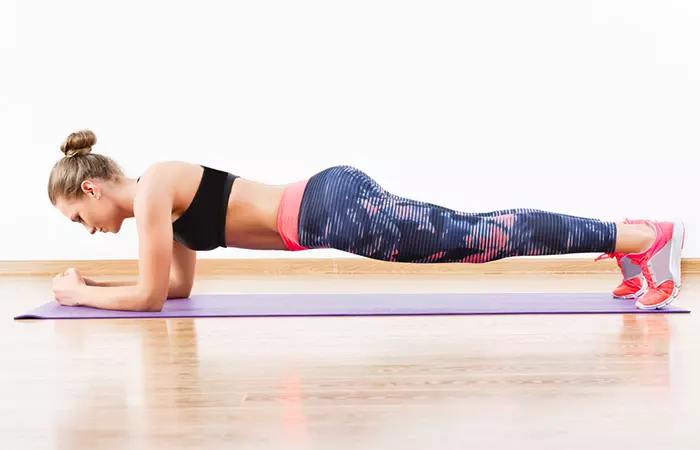
This is an excellent exercise to strengthen your core. Forward plank works on your glutes, upper and lower abdomen muscles, quadriceps, and hamstrings. Here is how to do it.
Steps
- Assume the cat pose.
- Now, go down by supporting your upper body on your forearm.
- Stretch your legs and support your lower body on your toes.
- Hold the position for 20 seconds.
- Relax for 10 seconds and repeat.
3. Side Crunches

This is a very easy but effective exercise. It works on your mid-abdomen and lower abdomen muscles, glutes, and obliques. Here is how to do it.
Steps
- Lie down on your right side with your left feet on top of your right.
- Stretch away from the body at 90 degrees to your body on the floor, palm down.
- Bend your left elbow and place your left palm lightly on your head.
- Begin by lifting both your legs towards your head and moving your head towards your feet.
- Do it 10 times and relax, and then repeat one more time.
- Repeat the same on your left side.
4. Scissor Kicks
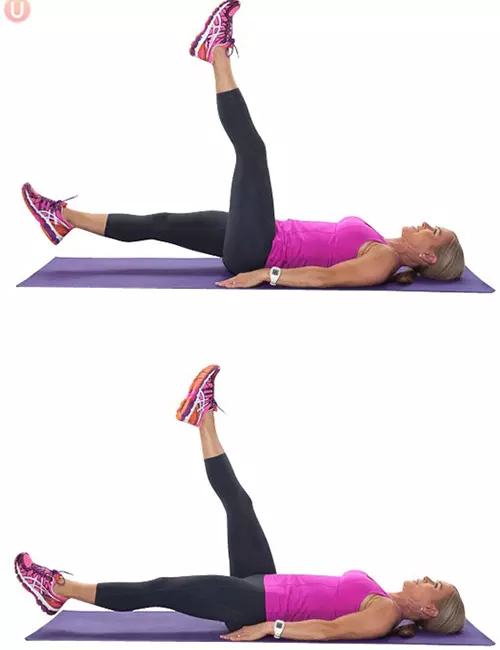
Here is one of the most popular lower ab workouts for women. This exercise may look simple and easy to do but is very effective when it comes to losing a belly pooch. It acts on your lower abdomen and upper abdomen muscles. Here are the steps.
Steps
- Lie down flat, facing the ceiling.
- Now lift your legs up at 90 degrees to your body.
- Move your right leg towards your chest and your left leg towards the floor.
- Now move your left leg towards your chest and your right leg towards the floor.
- Repeat this 10 – 20 times.
5. U- Boat

This is one more easy exercise that acts on your lower abdomen muscles. Here are the steps to do it.
Steps
- Bend your knees and sit with your feet flat.
- Lean back and support your upper body with your elbows, palms facing down.
- Lift your legs up, toes pointed, and knees touching.
- Bring your legs to the right; do not lift your hips from the ground.
- Lower your legs and then lift your legs up and bring them to the right.
- Lower your legs and repeat this for 10-15 times.
Infographic: Top 5 Exercises To Lose Belly Pooch
Lack of exercise and a sedentary lifestyle are the most common causes of a belly pooch. So, to get rid of it, one must start moving and be consistent with exercises. A proper diet and fitness routine can help trim your belly pooch and get a healthy body. The infographic below gives you an overview of the top 5 exercises to help reduce belly pooch. Take a look. Illustration: StyleCraze Design Team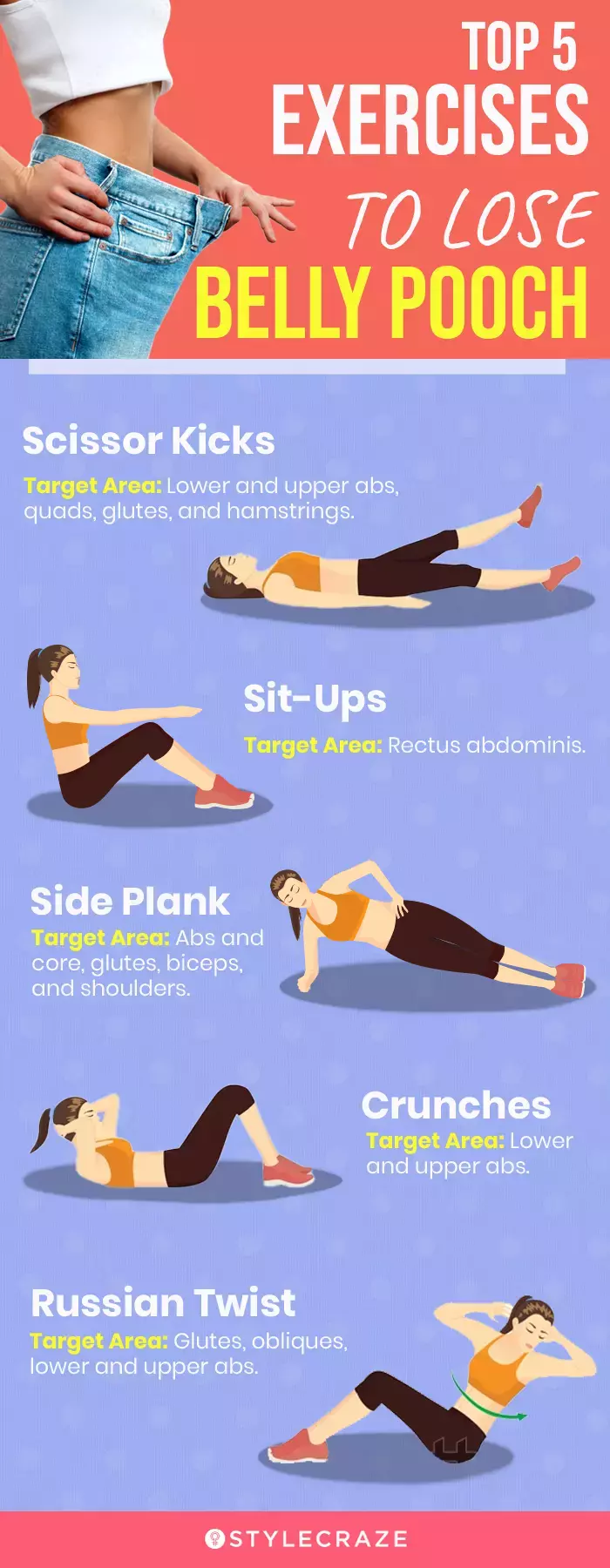
With a sedentary lifestyle and poor diet habits, a belly pooch can gently creep on your waist without much announcement. While it is easier to see changes in other parts of the body with regular exercise, belly fat and the pooch thereof might seem a tad bit difficult to lose. Poor diet, genetics, alcohol, or even chronic stress, can all lead to the formation of a belly pooch. So, how to get rid of belly pooch? Simple! You can follow the above mentioned tips to reduce lower belly fat effectively. These include, avoiding junk, high-calorie, or gas-producing food, along with managing your stress levels, and incorporating a HIIT workout routine. Complementing these with healthy eating habits and an active lifestyle can bring about visible changes in due course of time.
Main Idea: Diet and exercise are a MUST to lose belly flab.
Learn how to get rid of that pesky lower belly pooch with this reverse sit-up technique in the video below! Get ready to tone and strengthen your core and get the body you’ve always wanted.
Frequently Asked Questions
What causes upper belly pooch?
Jesse Feder, “The cause of upper belly pooch can also be due to both belly fat and/or bloating.”
Is it possible to lose belly pooch by skipping?
Jesse opines that it is possible to lose belly pooch from skipping. Skipping can be a good cardio workout that can help you burn off extra calories and, in turn, reduce belly fat.
Will my belly pooch ever go away?
“You can start to lose belly pooch in as little as a week. However, results can vary depending on the methods used to achieve your results. If you combine a healthy diet plan with a good exercise plan, you can see results quicker than if you were to do one or the other,” says Jesse Feder.
Why is it so hard to lose a belly pooch?
Insulin resistancei When the cells in the liver and muscles are sensitive to insulin and cannot absorb glucose from the blood. and slower fat metabolism in the cells could make it harder to get rid of fat in certain areas of the body, including the abdomen (8).
Why am I skinny but have a pooch?
This could be most likely due to genetics, bad eating habits, lack of exercise, and underdeveloped core muscles. You need to modify your lifestyle and diet to increase your core strength and tone the muscles by distributing the fat evenly.
Is lower belly pooch normal?
It could seem normal post-pregnancy, and due to genetics or aging. However, you can always work on the core muscles to reduce and get rid of the belly fat.
How to lose lower belly fat?
Following a healthy diet, being consistent with cardiovascular workouts, and a proper lifestyle may help lose lower belly fat. It is also recommended to avoid junk food and sugary beverages to get rid of lower belly fat.
Key Takeaways
- Poor diet, lack of exercise, genetics, alcohol, and hormonal changes during pregnancy can cause a belly pooch.
- Start eating low-GI foods and lean protein and cut out high-calorie foods from your diet to get rid of your belly pooch.
- Do HIIT exercises like jump squats, Russian twists, and flutter kicks to tone your belly region.
Illustration: How To Get Rid Of Belly Pooch – 7 Best Ways
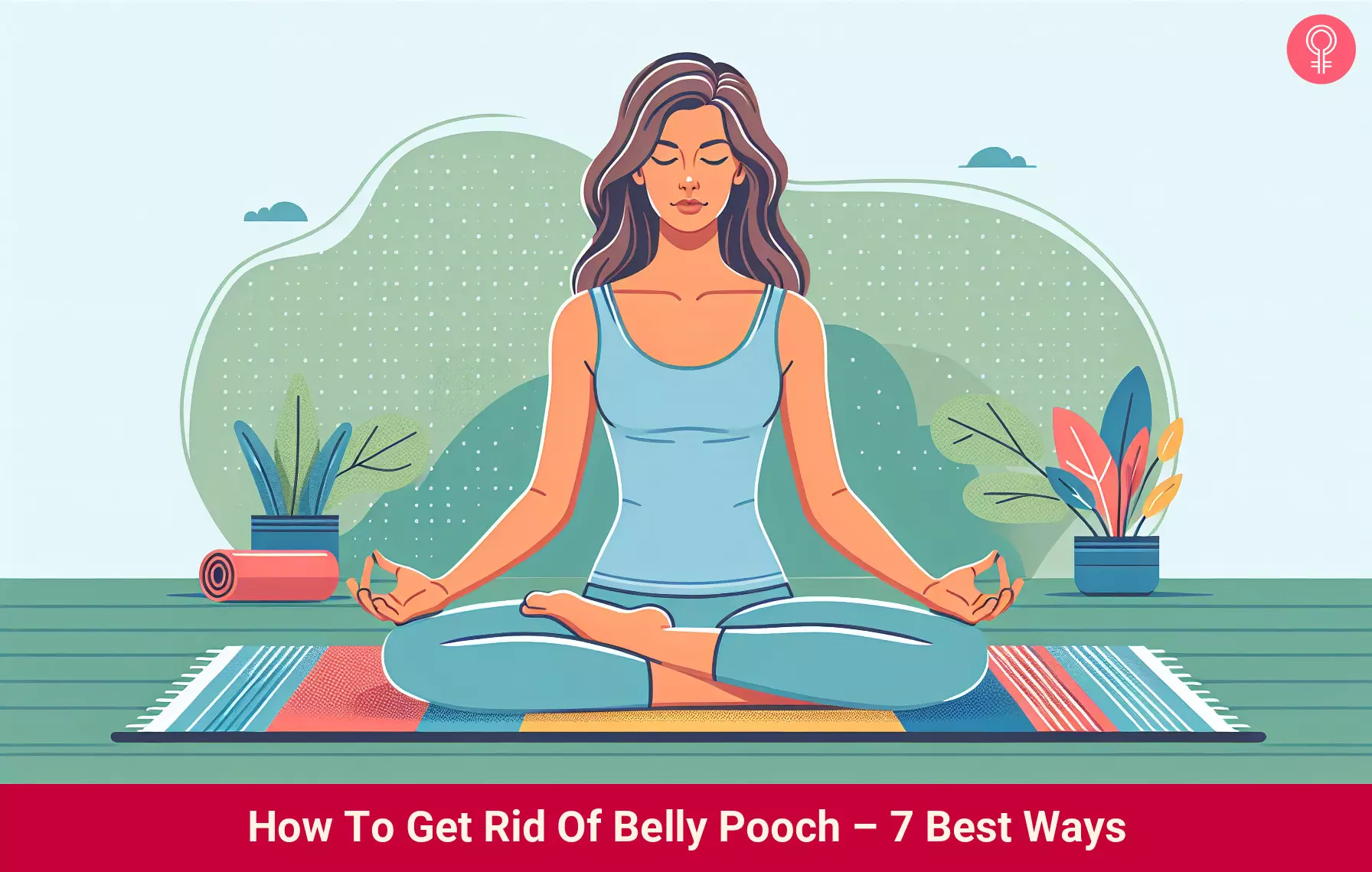
Image: Dall·E/StyleCraze Design Team
Personal Experience: Source
StyleCraze's articles are interwoven with authentic personal narratives that provide depth and resonance to our content. Below are the sources of the personal accounts referenced in this article.
i. WHAT GETTING RID OF JUNK FOOD FOR A WEEK MADE ME REALIZEhttps://messinprogressblog.wordpress.com/2017/02/24/what-getting-rid-of-junk-food-for-a-week-made-me-realize/
References
Articles on StyleCraze are backed by verified information from peer-reviewed and academic research papers, reputed organizations, research institutions, and medical associations to ensure accuracy and relevance. Read our editorial policy to learn more.
- “The Demographic Specific Abdominal Fat Composition and Distribution Trends in US Adults from 2011 to 2018” National Library Of Medicine.
- “Accessing your weight and health risk” National Heart, Lung, and Blood Institute, NIH.
- “Indicator Details: Percentage with Abdominal Obesity by Survey Year” Centers for Disease Control and Prevention.
- “Relation of Abdominal Fat Depots to Systemic Markers of Inflammation in Type 2 Diabetes” Diabetes care, National Institutes of Health.
- “Obesity and inflammation: the linking mechanism and the complications” Archives of medical science: AMS, National Institutes of Health.
- “The Hidden Dangers of Fast and Processed Food” National Institutes of Health.
- “The alcohol Hangover” Annals of Internal Medicine.
- “Alcohol Consumption and Obesity: An Update” National Institutes of Health.
- “Physical activity for health” National Institutes of Health.
- “Stress and abdominal Fat: Preliminary Evidence of Moderation by the Cortisol awakening Response in Hispanic Peripubertal Girls” National Institutes of Health.
- “Correlation between Pregnancy Related Weight Gain, Postpartum Weight loss and Obesity: a Prospective Study” National Institutes of Health.
- “Genetic and Environmental Factors Contributing to Visceral Adiposity in Asian Populations” National Institutes of Health.
- “The effect of fiber on satiety and food intake: a systematic review” National Institutes of Health.
- “Insulin levels, hunger, and food intake: an example of feedback loops in body weight regulation” National Institutes of Health.
- “The Importance of Energy Balance” National Institutes of Health.
- “Protein, weight management, and satiety” National Institutes of Health.
- “Chapter 15 Fats and Satiety” National Institutes of Health.
- “Trans Fatty acids and systemic inflammation in heart failure” National Institutes of Health.
- “C-Reactive Protein Causes Adult-Onset Obesity Through Chronic Inflammatory Mechanism” National Institutes of Health.
- “Effect of exercise training intensity on abdominal visceral fat and body composition” National Institutes of Health.
- “Retracted: Efficacy of Tupler Technique on Reducing Post Natal Diastasis Recti: A Controlled Study” Current Journal of Applied Science and Technology.
- “Mindfulness Intervention for Stress Eating to Reduce Cortisol and Abdominal Fat among Overweight and Obese Women: An Exploratory Randomized Controlled Study”, National Library Of Medicine.
- “Elucidating the role of diet in maintaining gut health to reduce the risk of obesity, cardiovascular and other age-related inflammatory diseases: recent challenges and future recommendations” National Institutes of Health.
- “What causes the insulin resistance underlying obesity?” PMC
Read full bio of Alexandra Dusenberry
- Ivory Howard is a certified yoga and Pilates instructor. She helps her clients reach their health and fitness goals through challenging workouts focused on balance, strength, and flexibility. She has a master’s degree in Public Health from The George Washington University. Ivory also has been featured in Weight Watchers, Fit & Well, The Zoe Report, Health Digest, Sisters from AARP, among other publications.
 Ivory Howard is a certified yoga and Pilates instructor. She helps her clients reach their health and fitness goals through challenging workouts focused on balance, strength, and flexibility. She has a master’s degree in Public Health from The George Washington University. Ivory also has been featured in Weight Watchers, Fit & Well, The Zoe Report, Health Digest, Sisters from AARP, among other publications.
Ivory Howard is a certified yoga and Pilates instructor. She helps her clients reach their health and fitness goals through challenging workouts focused on balance, strength, and flexibility. She has a master’s degree in Public Health from The George Washington University. Ivory also has been featured in Weight Watchers, Fit & Well, The Zoe Report, Health Digest, Sisters from AARP, among other publications. - Jesse Feder, RDN/LDN, is a Clinical Dietitian at the Memorial Regional Hospital. He is also a certified by the American College of Sports Medicine as a personal trainer (ACSM-CPT) and the National Strength and Conditioning Association as a Certified Strength and Conditioning Specialist (NSCA-CSCS).
 Jesse Feder, RDN/LDN, is a Clinical Dietitian at the Memorial Regional Hospital. He is also a certified by the American College of Sports Medicine as a personal trainer (ACSM-CPT) and the National Strength and Conditioning Association as a Certified Strength and Conditioning Specialist (NSCA-CSCS).
Jesse Feder, RDN/LDN, is a Clinical Dietitian at the Memorial Regional Hospital. He is also a certified by the American College of Sports Medicine as a personal trainer (ACSM-CPT) and the National Strength and Conditioning Association as a Certified Strength and Conditioning Specialist (NSCA-CSCS).
Read full bio of Arshiya Syeda
Read full bio of Himanshi Mahajan







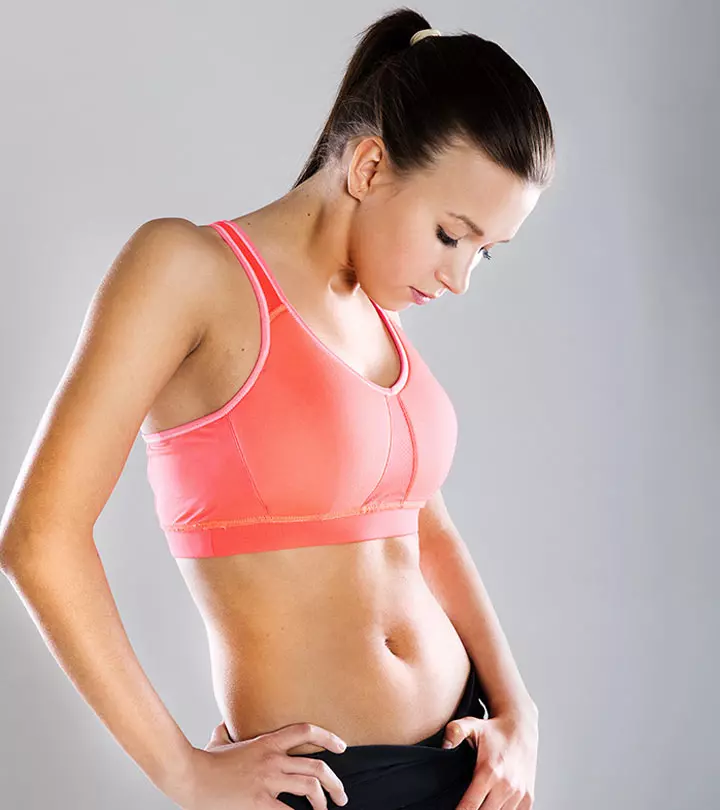




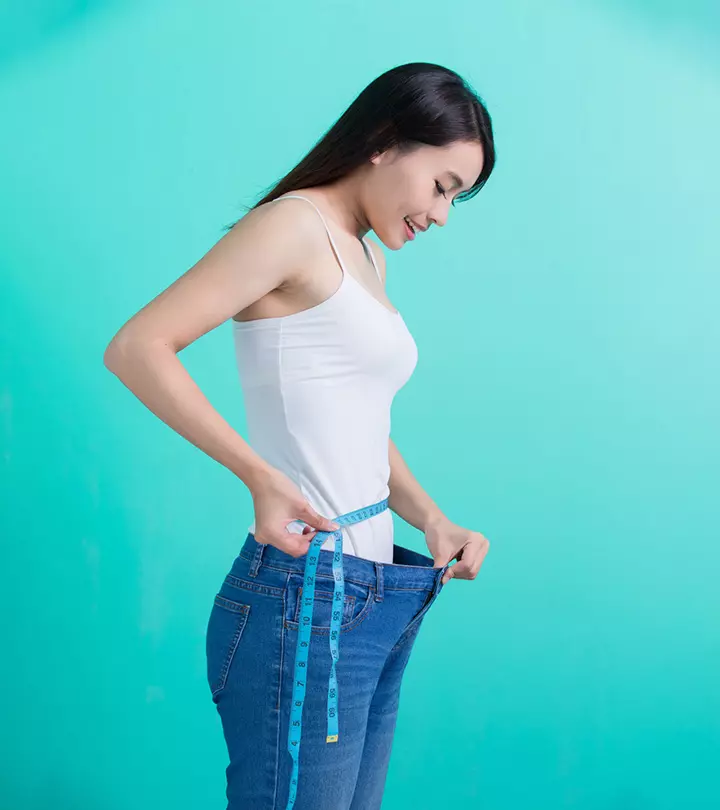









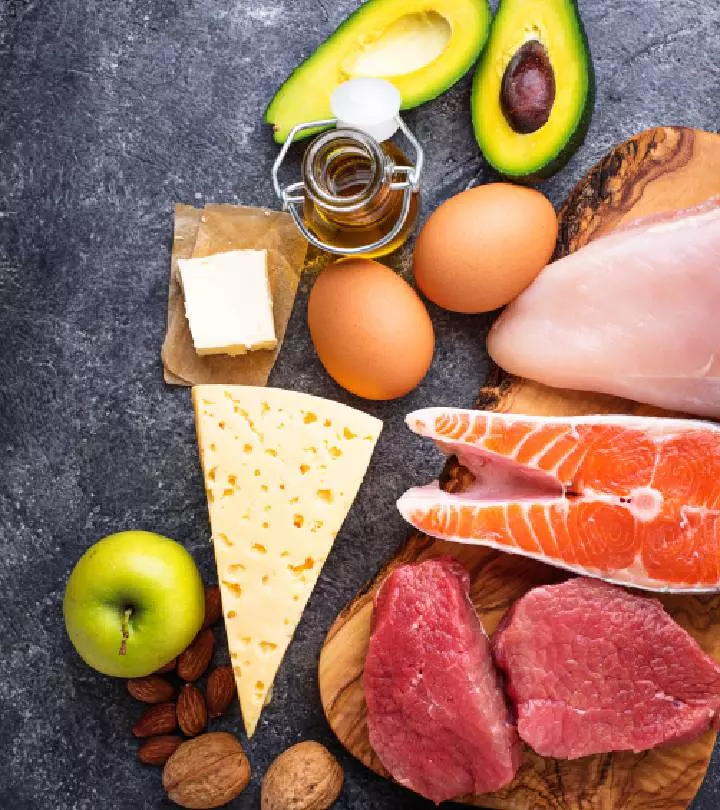
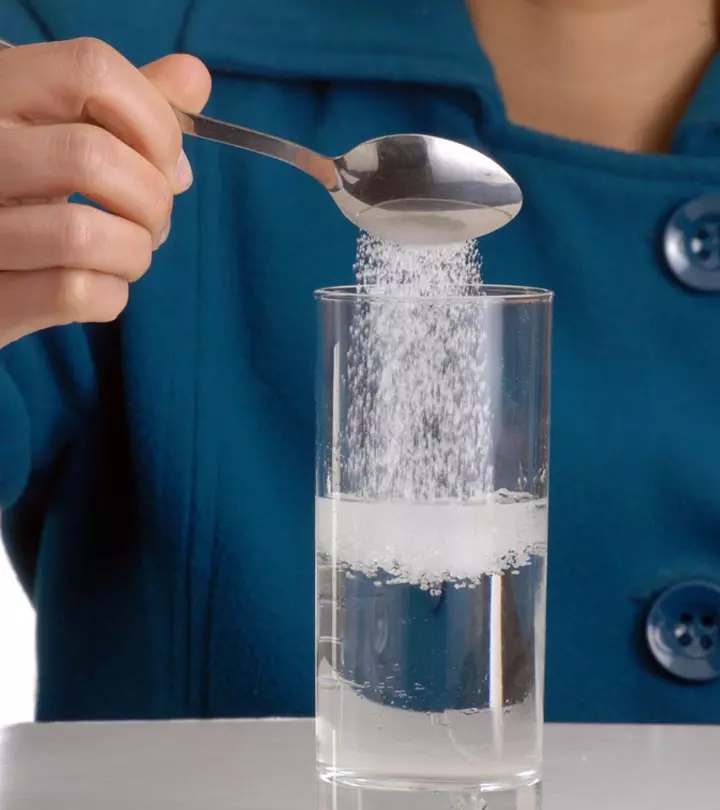
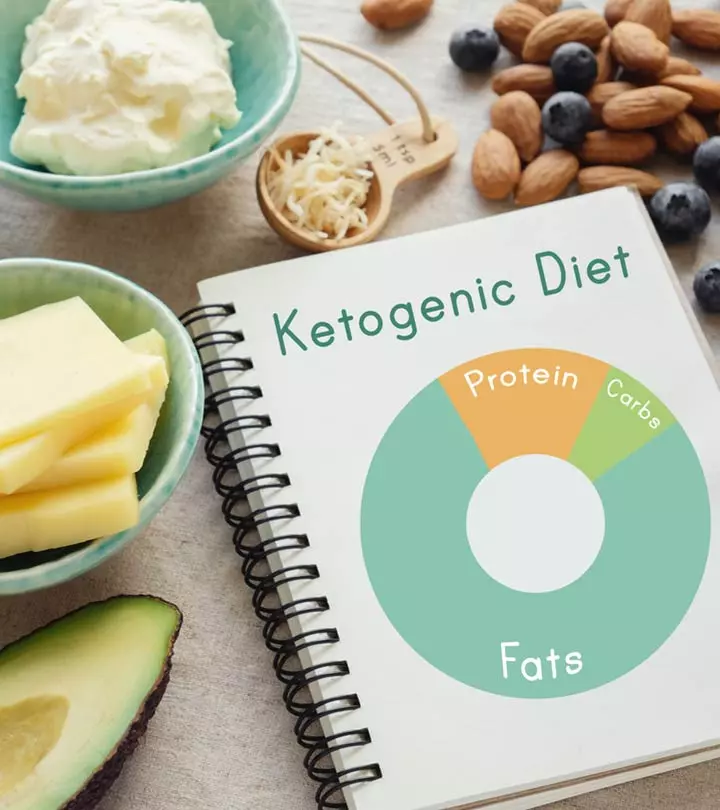



Community Experiences
Join the conversation and become a part of our empowering community! Share your stories, experiences, and insights to connect with other beauty, lifestyle, and health enthusiasts.